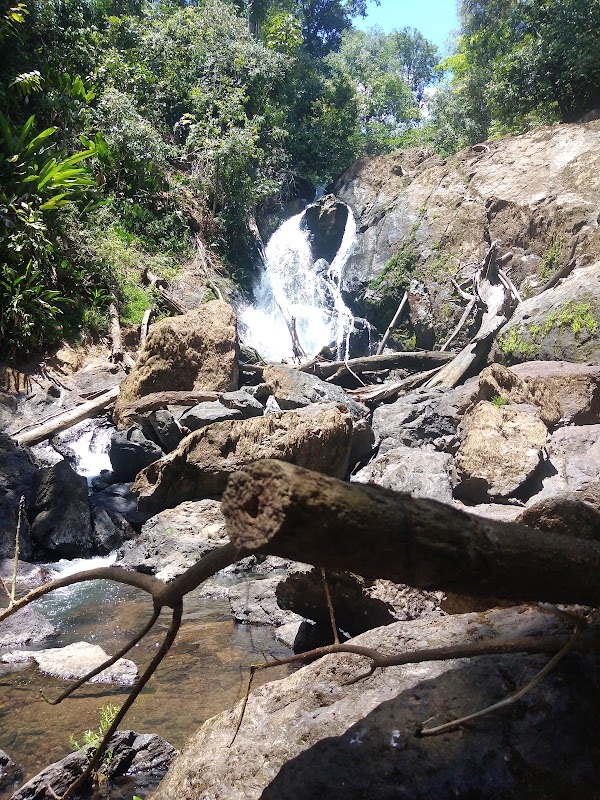Untamed Trails and Wildlife Wonders: Top Day Hikes in Corcovado National Park, Costa Rica
Corcovado National Park offers some of Costa Rica’s most challenging and rewarding day hikes, where lush rainforest trails lead to rare wildlife encounters and panoramic views. This guide highlights practical routes, essential tips, and wildlife watching opportunities to help adventurers prepare for a day deep in untamed nature.
Start Early
Begin your hikes at first light to avoid afternoon heat and rain showers common in the rainforest.
Wear Appropriate Footwear
Use sturdy, waterproof hiking boots with strong grip to navigate muddy and uneven terrain safely.
Carry Ample Water
Pack at least 2 liters per person to stay hydrated during humid, sweat-inducing hikes.
Respect Wildlife Distance
Keep a safe distance from all animals to avoid disturbing their natural behavior and to stay safe.
Untamed Trails and Wildlife Wonders: Top Day Hikes in Corcovado National Park, Costa Rica
Corcovado National Park demands your full attention — a place where rainforests pulse with life and rivers dare you across their swift currents. This Costa Rican gem on the Osa Peninsula offers day hikes that challenge with dense trails while rewarding with unfiltered wilderness encounters. Choose from routes carved through forest floors thick with fallen leaves and towering trees, where monkey calls punctuate the humid air and the ground might tremble beneath the heavy steps of a tapir or the flutter of scarlet macaws overhead.
La Leona Trail
A 9-kilometer trek with about 150 meters of elevation gain, La Leona Trail routes across uneven dirt paths and occasional muddy patches, winding through lowland rainforest. The trail demands steady footing but moves steadily at a moderate pace. Keep eyes peeled for the elusive jaguar tracks etched in the damp earth here, and prepare to spot toucans and howler monkeys making their morning rounds. The route leads to the beach at San Pedrillo station, where tide pools tempt explorers and ocean breezes carry salt and promise.
Sirena Station Loop
This more demanding loop spans roughly 13 kilometers with an elevation gain around 200 meters, threading through dense jungle that tests your endurance with sticky humidity and slippery roots. The terrain turns rugged near rivers with wooden bridges that keep you safely above the water’s playful leaps and swirling force. Wildlife thrives here — tapirs, peccaries, and sometimes even pumas press quiet among the ferns. The Sirena Ranger Station offers rest and a spectacular vantage point over the canopy, making the effort worthwhile.
Practical Tips
Hiking in Corcovado is more than just putting one foot in front of the other. Hydration is critical under the thick canopy where sunlight trickles sparingly. Proper footwear with good grip is essential; trails turn slick in the frequent rain. Begin hikes early, just as the day awakens with bird song and the forest exhales moisture, to avoid the midday heat and afternoon storms that sweep through.
Wildlife Watching
Corcovado’s wildlife never waits. Arm yourself with binoculars and patience to catch glimpses of scarlet macaws wheeling against the sky or caimans resting lazily in shaded riverbanks. Along trail edges, tawny capuchins navigate with swift precision, while sloths cling patiently to branches, unfazed by your passing.
Respecting the Park
Corcovado is fiercely itself—a force that respects no shortcuts or casual visitors. Stay on marked trails, heed ranger instructions, and carry out all waste. This park thrives on the delicate balance of its ecosystem, so tread lightly and listen closely to the forest’s unspoken rules.
Each trail is a negotiation with wild nature, an experience both humbling and vital. Equip yourself with knowledge, respect the terrain’s mood, and you’ll return not just with photographs, but a sense of engagement with one of Earth’s most primal environments.
Nearby Trips
All Adventures
Boat Charters
Water Activities
Adventures near Puerto Jiménez
Discover the unique and memorable adventures that make Puerto Jiménez special.
Frequently Asked Questions
Are guided tours mandatory in Corcovado National Park?
Yes, all hikes in Corcovado require official guides provided by the park. They ensure safety, enhance wildlife spotting, and help protect sensitive habitats.
What kind of wildlife can I expect to see on these hikes?
Visitors commonly see scarlet macaws, howler monkeys, tapirs, coatis, and various reptiles. Early morning and late afternoon increase chances for sightings.
Is the terrain suitable for beginner hikers?
The trails vary but are generally challenging due to humidity, uneven surfaces, and occasional river crossings. Casual hikers should consider shorter segments or easier routes.
How should I prepare for unpredictable weather?
Pack quick-drying clothes, waterproof gear, and plan hikes early to avoid afternoon storms. Checking weather forecasts before arrival is crucial.
Can I camp inside Corcovado National Park?
Camping is restricted to designated zones and requires permits. For day hikes, staying in nearby Puerto Jiménez or Drake Bay is recommended.
Are there any environmental concerns to keep in mind?
Corcovado is one of the most biologically intense places on Earth. Stick to trails, avoid touching plants and animals, and carry out all trash to minimize impact.
Recommended Gear
Waterproof Hiking Boots
Protect feet on slippery, wet jungle trails and provide ankle support.
Lightweight Rain Jacket
Keeps you dry during sudden downpours common in the rainy season.
Insect Repellent
Essential to protect against mosquitoes and biting insects in dense forest.
Binoculars
Enhance wildlife sightings especially for birds and elusive mammals.
Local Insights
Hidden Gems
- "The rarely visited Gordon’s Pool waterfall offers a quiet swim spot accessible via a short detour from Sirena Trail."
Wildlife
- "Look for the black-headed spider monkey and the endangered Baird’s tapir, elusive but present in deeper sectors of the park."
History
"Corcovado was designated a national park in 1975 to protect Honduras rainforest, once threatened by logging and slash-and-burn farming."
